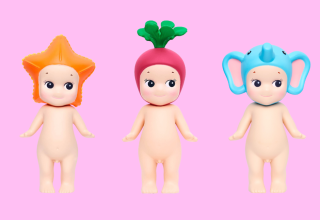
As Part of the Women in Media conference currently ongoing, and the Mancunion’s takeover, I decided to delve into Chromatica. The recently delivered album from Lady Gaga.
Fitting, too, because this is Women’s History Month.
Upon first listen, I liked Lady Gaga’s ‘Chromatica’. By the second listen, I loved it . The album is showered with thunderous and dramatic imagery and sounds, yet the lyrical content is personal and emotional.
I love the contrast between its dark themes and energetic dance music. Instead of drowning in sorrow, Chromatica aims integrally towards growth and repair. Lady Gaga accepts she cannot change the past, but she can use it to pave her future. This resonance has an uncanny and vital feel within our devastating and uncertain times. It seems that this emotional dance album was made for the here and now!
Chromatica is divided into three unique segments with Gaga herself describing the opening track, ‘Chromatica I’, as symbolising her journey to healing. It begins with a grave string-arrangement where she confronts her distorted journey and sets the scene for a cinematic experience. This track is the initial welcome into the world Gaga has created: a world where she can be free, but more importantly, honest – with us and herself.
The first lyric-driven track, ‘Alice’, is a relatable song detailing her struggles with mental-illness and belonging. She refuses to give up on her dreams. Whilst most of the album is 90s-inspired, this is a distinctly 00s house and electronica banger with some 90s EDM.
Lead single ‘Stupid Love’ is an anthem of courageous love and electropop. The neon-coloured music video (filmed on an iPhone 11 Pro!) sees Gaga portray a dance-warrior on the war-torn planet Chromatica, leading her people to peace – how very timely! I wonder if she could lend us her disco warrior spirit?
Gaga – From victim to survivor
The number one single ‘Rain on Me’, her duet with Ariana Grande, contains elements of French house and synth-disco beats. The rain may be metaphoric, but with her famous robotic spoken-word delivery, alongside Grande showing off her signature high-note octave, there is much friendly fire to be had as they belt their lines in the final chorus.
‘Free Woman’, a Eurodance acid-house anthem, is one of my favourites. It sees Gaga reclaim her identity and gender after a sexual assault – enabling Gaga to go from victim to survivor. The first act finishes with another Eurodance song, ‘Fun Tonight’; a breakup anthem with mentions of fame, paparazzi and Gaga’s inability to be happy.
‘Chromatica II’ opens with orchestral grandeur and crescendos into ‘911’. Her famous robotic vocals fit perfectly. ‘911’ and fellow euro-disco track ‘Plastic Doll’, a feminist anthem about objectification, are definitive highlights. Another stand out track is ‘Sour Candy’, a pop and house track that has more than ample ground for official release. It features K-pop band Blackpink, singing with impressive vocal dexterity in both English and Korean.
Gaga addresses her past and being in an unhealthy relationship with herself.
Whilst I do not love the rest of the album as much, it still provides some excellent tracks. The electro-pop ‘Enigma’ is about Gaga’s desire for mystery; she tells a lover she can be anything they desire. This section’s final song is the French house, nu-disco ‘Replay,’ where Gaga uses ghost-like vocals to address her past and being in an unhealthy relationship with herself.
‘Chromatica III’ is especially dramatic, having been compared to Hans Zimmer’s music. It is unsurprising, then, her duet with the Sir Elton John, ‘Sine from Above’, succeeds it. This track, blending disco, dance, pop, trance and house, discusses music’s healing power and Gaga’s relationship with a higher power. Gaga is often compared to Madonna, but in many ways, she is similar to Elton (for one, her vocals are insane, and much stronger than Madonna’s).
‘1000 Doves’ is a trance song with a piano-driven house-beat and ethereal backing vocals. A graceful cry for help, Gaga professes her love for her fans, but wants them to see her as human. Whilst her self-portrayal as an alien might contradict her desire to be seen as human, I would argue her portraying herself as alien is confronting the ways she has been other-ed and dehumanised, as well as criticising the growing evils of planet Earth: Chromatica is her dream world.
The song is like a modern recreation of Madonna’s ‘Vogue’.
The album closes with ‘Babylon’, a disco-influenced, 90s-house and hi-NRG track about gossip. Gaga says gossip used to run her life, making her feel small and chained. This track enables her to break free from those constraints. The song is like a modern recreation of Madonna’s ‘Vogue’. This section is my least favourite of the three, yet it’s still a great listen.
Chromatica is one of the most personal and straightforward of her releases to date. The short length of some of the songs is a touch jarring, but deliberate if the aim is to make the album fast-paced, energised and overwhelming. Although the record has been called “overworked,” “claustrophobic,” and “disjointed”, that is seemingly an accurate description of Gaga.
Broken and disjointed, but full of disco drama and packing an electropop punch.







